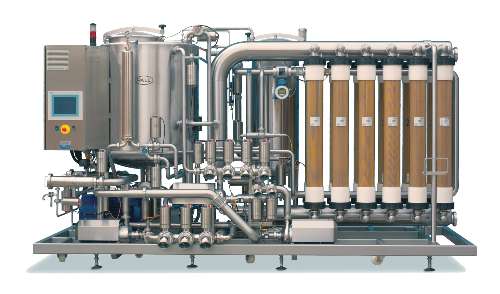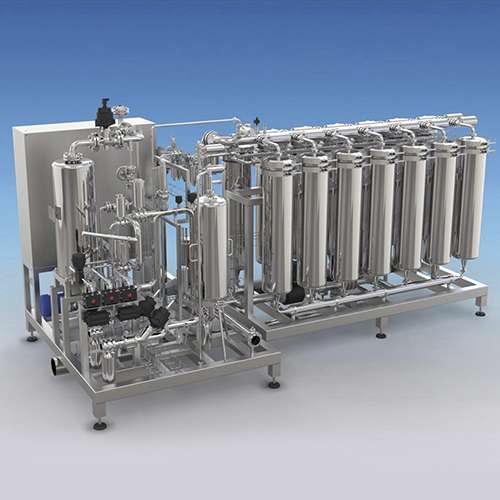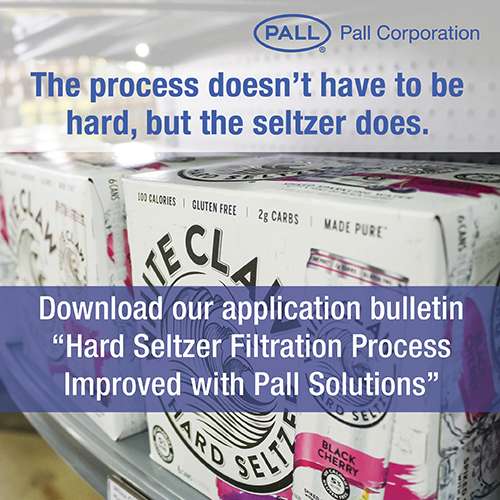Contact our experts today to discuss the right hard seltzer filtration solution for you.
What Is Hard Seltzer?
Hard Seltzer is experiencing a rise in popularity thanks to health-conscious consumers. Easier access to dietary information has led to consumers becoming increasingly aware of their nutritional needs and purchasing decisions are no longer just based on taste, but on health factors too. With a low-calorie count and a reduced alcohol content of between 4-5%, hard seltzer is attracting health-conscious men and women of all ages. Often gluten-free, it provides a cost-effective alternative to traditional alcoholic beverages. The product's broad appeal continues to drive sales, with Market Research predicting the global market will reach $18.2 billion by 2030.
The Challenge of Filtering Hard Seltzer
The base product of hard seltzer is usually from neutral spirits, wine, malt or sugar. While there is some variation among hard seltzers, most are clear, colorless beverages. But achieving a colorless, flavorless base is a crucial step that poses considerable challenges:
- Hard seltzer can be hazy and have a slight color after fermentation.
- Fermentation by-products can negatively affect flavor and odor.
- Traditional Powdered Activated Carbon (PAC) beds, although effective at decolorization, odor and trace impurity removal, are labor intensive, have a long contact time, and have significant cleaning costs.
- The process is receptive to spoilage microorganisms and creates new and different yeast and bacteria issues
Each of these factors influences the taste profile of hard seltzer. Therefore, the selection of the right filtration technology is crucial.
-
Clarification
-
Activated Carbon
-
Color Removal
-
Flavor & Microbial Stabilization
Before color removal, a clarification step will remove yeast, haze and other solids that might be present. Filtration of various bases is possible with Pall's SUPRA lenticular module solutions or crossflow filtration systems.
Pall’s SUPRApak™ lenticular modules are the latest development in sheet-based filtration. The modules have a filter area higher than most lenticular modules and a unique flow configuration that maximizes filtration and adsorption.
Whether it's for larger production facilities specializing in hard seltzer or an established beverage producer wanting to produce hard seltzer, Pall's OenoflowTM system for wine PROFi system for beer can clarify hard seltzer.
Powdered activated carbon (PAC) is used extensively in the food and beverage industry for adsorption applications. Using bulk PAC has significant drawbacks due to the handling of bulk carbon powder, equipment cleaning, and time and costs associated with carbon removal from the process. The new Seitz® AKS FB immobilized carbon filter media addresses these concerns by combining activated carbon into a matrix of cellulosic fibers. Carbon particles are protected from shedding downstream by pairing immobilized carbon media with downstream protective filter papers. Find out how Seitz AKS FB can increase the throughput of hard seltzer here.
When producing hard seltzer, a sugar-containing base deriving from different raw materials is typically fermented to produce and alcoholic intermediate product. This intermediate product needs to be clarified and purified. The purification includes both removal of color and removal of unwanted aroma/ flavor. Depending on the type of raw material, the yeast strain and the production parameters, the number of substances to be removed can vary broadly. Activated carbon filtration using carbon-impregnated sheets or sheet-based modules, or carbon beds, fixes color and flavor issues, so that the intermediate product can be blended and added with aroma to produce a crystal clear and pure seltzer during that offers great taste, refreshens in absence of disturbing off-flavors. Find out how Seitz AKS FB can increase the throughput of hard seltzer here.
Having only low amounts of carbohydrates, sugars, alcohol and protein levels means that developing the right taste profile can be a challenge with hard seltzer. Typically, the desired flavor is introduced via dosing technology. In addition, Pall’s final filtration solutions offer very high microbial safety by having proven reduction rates for spoilers. Research also shows that not using heat and pasteurization technology for microbiological stability will be advantageous for the carefully adjusted flavor of the seltzer product. In addition to individual housings, CFS NEO can be applied as a whole system solution before packaging to achieve microbial stabilization. With the PAREQ cartridge filter family, Pall provides a selection of specifically developed final filters matching the individual demands of the products and microbial challenges.
The SUPRA product range comprises SUPRApak and SUPRAdisc to be advantageously applied for depth filtration applications and the SUPRA AKS range, where activated carbon is used as immobilized carbon media to effectively adjust color and aroma of the hard seltzer product.











